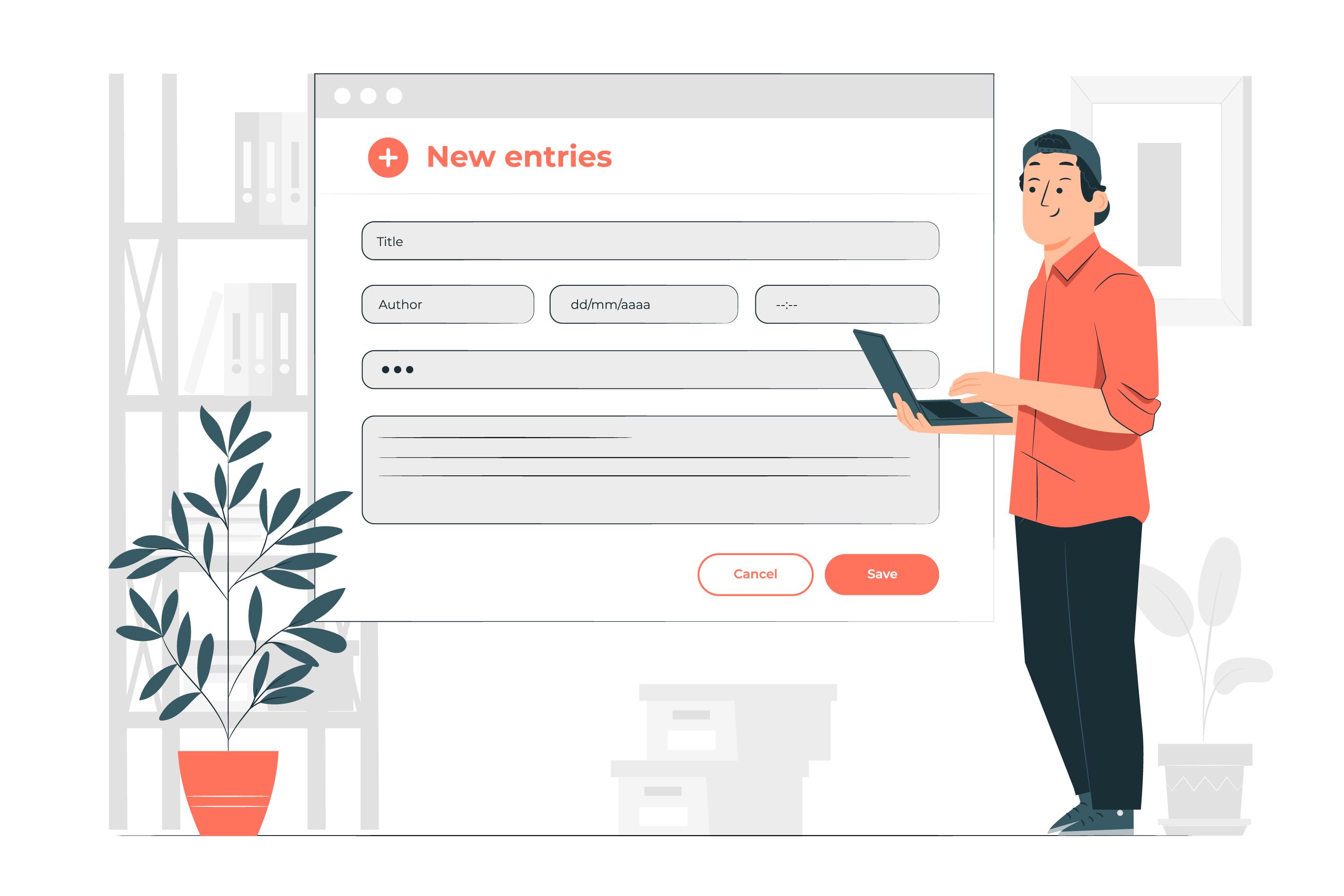Both surveys and questionnaires play crucial roles in gathering information, yet their functions, applications, and methodologies diverge significantly
The distinction between survey vs questionnaire is more than just semantic; it's foundational to crafting effective research tools. Both surveys and questionnaires play crucial roles in gathering information, yet their functions, applications, and methodologies diverge significantly. Understanding these differences is key to effectively utilizing them for accurate and insightful data collection. This differentiation not only aids in clarifying discussions about research methods but also in shaping the approach one takes in gathering valuable information, illustrating the importance of grasping the nuances of what is a survey versus what constitutes a questionnaire.
The article will begin by defining the terms 'survey' and 'questionnaire,' providing clear definitions of a questionnaire and a survey to establish a solid foundation for understanding. Following this, it will delve into the key differences between surveys and questionnaires, shedding light on the unique characteristics that set them apart and the implications these differences have for their use. It will then guide readers through scenarios illustrating when to use a survey vs a questionnaire, highlighting the strategic application of each based on the goals of a project. Additionally, the piece will address common mistakes to avoid in using surveys and questionnaires, enhancing the effectiveness and reliability of data gathering efforts. Through this exploration, the article seeks to provide a comprehensive understanding of surveys vs questionnaires, enabling readers to make informed decisions about their research approaches.
Definitions: Survey and Questionnaire
What is a Survey?
A survey is a method used to gather information from a specific group of individuals by asking them relevant questions. This process is typically organized for professional or academic purposes and can be conducted through various modes, including face-to-face interviews, telephone conversations, or online through self-administered questionnaires. The primary goal of a survey is to collect data that reflects the characteristics or opinions of the general population or specific groups within it, allowing researchers to draw conclusions or make informed decisions based on this data. Surveys are crucial for obtaining insights into public opinion, consumer behavior, or specific demographic information and involve careful planning and execution to ensure accuracy and relevance of the data collected.
What is a Questionnaire?
A questionnaire is a research instrument consisting of a series of questions and other prompts designed to gather information from respondents. It can be a part of a larger survey but is also a standalone tool capable of collecting data independently. Questionnaires can include a mix of open-ended questions, which allow respondents to elaborate on their responses, and closed-ended questions, which solicit specific answers. This makes them versatile tools for both qualitative and quantitative research. Questionnaires can be administered in various forms, such as online, over the telephone, through direct mail, or in person. Each method has its advantages and limitations concerning cost, reach, and the likelihood of obtaining representative and truthful responses.
Researchers must design questionnaires carefully to ensure they are clear and accessible to the target audience, avoiding technical jargon and complex language that might confuse respondents. The design process includes choosing the right types of questions to meet the research objectives and crafting them in a way that elicits clear, meaningful, and actionable responses.
Key Differences Between Surveys and Questionnaires
Scope and Purpose
Surveys and questionnaires, while both essential tools for data collection, serve different purposes and are tailored to meet distinct needs. A survey is a comprehensive tool used to gather data from a specific target audience, aiming to understand the broader aspects of a topic or issue to inform decision-making and drive business action. Surveys are designed to collect both qualitative and quantitative data, allowing for a detailed analysis that can lead to significant insights and conclusions about a population.
On the other hand, questionnaires are typically used to collect focused information quickly and efficiently. They are often employed to gather customer feedback or other specific information and generally consist of a series of closed- ended questions, with occasional open-ended questions to provide qualitative insights. The primary purpose of a questionnaire is to collect data points from individual respondents without necessarily aiming to analyze broader trends or patterns.
Types of Questions
The nature of the questions included in surveys and questionnaires also highlights key differences between the two tools. Surveys often use a mix of open-ended and closed-ended questions. This combination allows for the collection of both objective data, which can be quantitatively analyzed, and subjective data, which provides deeper insight into the thoughts and feelings of respondents. Open-ended questions in surveys encourage detailed responses that can reveal complex opinions and motivations.
Conversely, questionnaires primarily rely on closed-ended questions. These questions are straightforward and are designed to elicit specific, measurable responses that can be easily quantified and analyzed. The use of predominantly closed-ended questions helps in obtaining direct answers and simplifies the data collection process, making questionnaires a more practical choice for quick data gathering.
Data Analysis and Usage
The analysis and subsequent use of data gathered also differ significantly between surveys and questionnaires. Surveys, with their blend of question types and comprehensive scope, are suitable for in-depth statistical analysis. Researchers use survey data to evaluate trends, compare different demographic groups
When to Use a Survey vs. a Questionnaire
Ideal Scenarios for Surveys
Surveys are particularly valuable when researchers need to collect data from a broad audience to analyze trends or behaviors across a population. They are effective for understanding complex issues through a combination of open- ended and closed-ended questions. For instance, surveys are essential when a business aims to understand customer preferences across different demographics or when a healthcare facility wants to assess patient satisfaction comprehensively. They allow for a deeper analysis of data, helping to uncover not just what people think, but why they think that way.
Surveys are also crucial when the goal is to generate statistically valid results that can be generalized to a larger population. This is often the case in market research, where understanding broad consumer trends is necessary to strategize business decisions. The structured nature of surveys, combined with rigorous sampling methods, ensures that the data collected is reflective of the entire target group, minimizing biases and errors.
Ideal Scenarios for Questionnaires
Questionnaires, on the other hand, are best used when specific, straightforward information is required quickly and cost-effectively. They are particularly useful for collecting customer feedback on a new product or service since they can be distributed widely and filled out at the respondent's convenience. For example, an online retailer might use a questionnaire to gauge customer reactions to a new website design to gather immediate feedback that can be quickly analyzed and acted upon.
In scenarios where large volumes of data need to be gathered without the need for in-depth analysis, such as initial screenings in job applications or basic medical history forms in clinics, questionnaires are the preferred tool. They provide a direct method of collecting data without the necessity for detailed interpretation, making them ideal for situations where quick decisions need to be made based on clear, concise data points.
Furthermore, questionnaires are invaluable in situations where the cost of in-person interviews would be prohibitive. Large companies, for instance, can deploy questionnaires to thousands of customers to gather extensive data that would be impossible to collect through individual interviews. This method not only saves time but also expands the reach of the data collection effort, ensuring a more comprehensive understanding of the customer base.
Both surveys and questionnaires serve distinct purposes in data collection and analysis. Choosing the right method depends on the specific needs of the project, whether it's gaining a deep understanding of a complex issue through a survey or collecting straightforward, specific information through a questionnaire.
Common Mistakes to Avoid
Leading Questions
Leading questions can significantly skew survey results as they prompt respondents to answer in a specific way, often aligning with the surveyor's expectations. This type of question subtly suggests that there is a correct response, which can distort genuine feedback. For instance, asking "How beneficial did you find our service?" assumes the service was beneficial, which may not be the case for all respondents. Instead, a more neutral question such as "How would you describe your experience with our service?" allows for a range of honest responses.
Using Jargon or Unclear Acronyms
Utilizing jargon or acronyms that are not commonly understood by the general public can alienate or confuse respondents, leading to misinterpretations or incomplete responses. Surveys should avoid technical terms or industry- specific language unless absolutely necessary and clearly defined. For example, rather than asking respondents about their "ROI," the survey could mention "return on investment (ROI)," ensuring clarity.
Making Your Survey Too Long
Long surveys often lead to lower completion rates and can encourage 'satisficing'—where respondents provide satisfactory but not optimal answers. Researchers should aim to keep surveys concise and focused. Excessively long surveys, particularly those exceeding 20 minutes, are likely to result in respondent fatigue and potentially unreliable data. Each question should be essential and directly related to the survey’s objectives.
Overlapping or Unclear Response Options
Response options in surveys must be distinct and non-overlapping to avoid confusion and ensure that the data collected is clear and actionable. For example, if a survey asks about annual income with overlapping ranges like "$30,000- $40,000" and "$40,000-$50,000," a respondent earning $40,000 might be unsure which option to select. Clear, mutually exclusive options are crucial for accurate data analysis.
Vague and Open-Ended Questions
While open-ended questions can provide rich qualitative data, they must be crafted with care to avoid ambiguity and ensure they align with the survey’s goals. Vague questions can lead to responses that are difficult to interpret and analyze, reducing the overall effectiveness of the survey. Questions should be straightforward and guide respondents to provide the specific type of information required. Testing questions on a small, representative sample before full deployment can help identify and rectify any issues with vagueness or ambiguity.
Conclusion
Through the detailed exploration of surveys and questionnaires, this article has clarified the distinctive roles each play in research and data collection, guiding readers on when and how to effectively use these tools. By understanding that surveys offer a broader, more in-depth analysis of complex issues, while questionnaires provide precise, straightforward information quickly, researchers and professionals can tailor their approaches to meet specific objectives. Emphasizing the importance of avoiding common pitfalls such as leading questions and unclear language further enhances the reliability and effectiveness of these instruments in gathering valuable insights.
The significance of choosing the correct instrument according to the research need cannot be overstated; it determines the quality of data collected and the applicability of the insights gained. As we move forward, the evolving nature of research methodologies will undoubtedly refine the application and functionality of surveys and questionnaires. However, the foundational principles discussed here will remain critical to achieving accurate, meaningful results that can inform decision-making and strategies across various fields. Whether aiming for a broad analysis or seeking targeted feedback, recognizing and applying the nuances between surveys and questionnaires is paramount to the success of any research endeavor.
FAQs
-
What distinguishes a questionnaire from a survey?
A questionnaire typically gathers information from individuals, whereas a survey is a broader method of data collection aimed at a specific group. How does a research question differ from a survey questionnaire?
A research question is a broad query that guides the entire research process, while a survey questionnaire consists of specific questions designed to collect data to address the research question.-
What are the fundamental differences between a survey and an experiment?
A survey is an observational method that collects data through questionnaires or interviews without altering the environment or conditions. In contrast, an experiment involves manipulating one variable to see its effect on another, thus requiring a controlled environment. What is the difference between a survey question and an evaluation question?
Survey questions are formulated to collect data from respondents, whereas evaluation questions are intended to assess the effectiveness or impact of a particular project or program.
Create Survey Now













